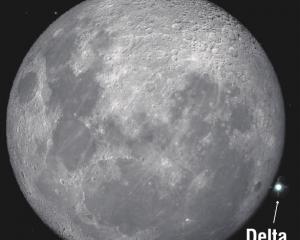Stargazers across Otago get to enjoy a celestial treat this week. For the first time in quite a while, it's possible to see all of the naked-eye planets and the moon simultaneously.
The school holidays mean that it's the perfect time to take your family on a tour of the brighter planets without leaving your back garden!
Our voyage begins, as it should, with Mercury. The innermost planet will probably be the hardest to find of our planetary prey, since it is relatively dim and low in the western sky. Look for a yellow ''star'' about 10 degrees above the horizon. Mercury sets just after 7.30pm, so you will need to get out early to spot it. If you have a telescope, the planet resembles a tiny crescent moon.
Once you have spotted Mercury, you can't miss Venus, the brightest of the planets on display. A telescope will reveal a tiny disc that's just over 60% illuminated. Keener stargazers can gaze at the bright star Regulus, in the constellation Leo, halfway between Mercury and Venus.
Today, the waxing crescent moon (just five days past new) is roughly midway between Venus and Jupiter. Owners of binoculars or telescopes can explore the Sea of Tranquillity, where, 49 years ago this week, Neil Armstrong and Buzz Aldrin first stepped on another world.
After sating your lunar passion, our nocturnal tour heads to Jupiter, which is high in the northern sky. Binoculars show all four major Jovian moons, and at the time our chart is drawn, there will be two moons on either side of the planet, making for a remarkable celestial vista.
Saturn, whose beautiful ring system is always stunning to view, is the next stop on our cosmic sojourn; it's presently right in the middle of the Milky Way star clouds, and at 6.30pm it can be found 30 degrees above the eastern horizon.
Mars is the final stop on our journey. Early in the evening, the red planet is rising low in the southeastern sky; a telescope will show that the planet's surface is obscured by a huge dust storm.











